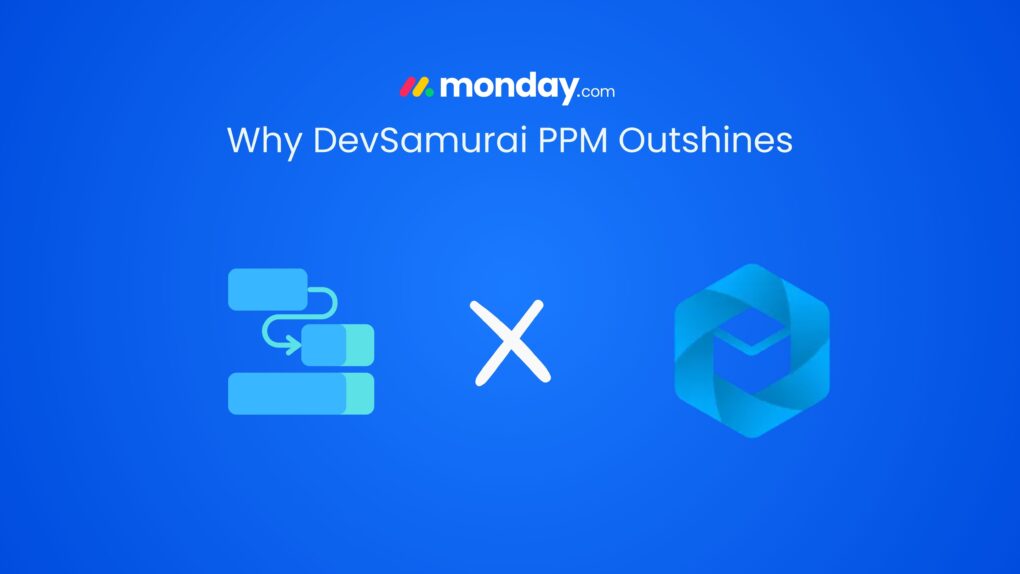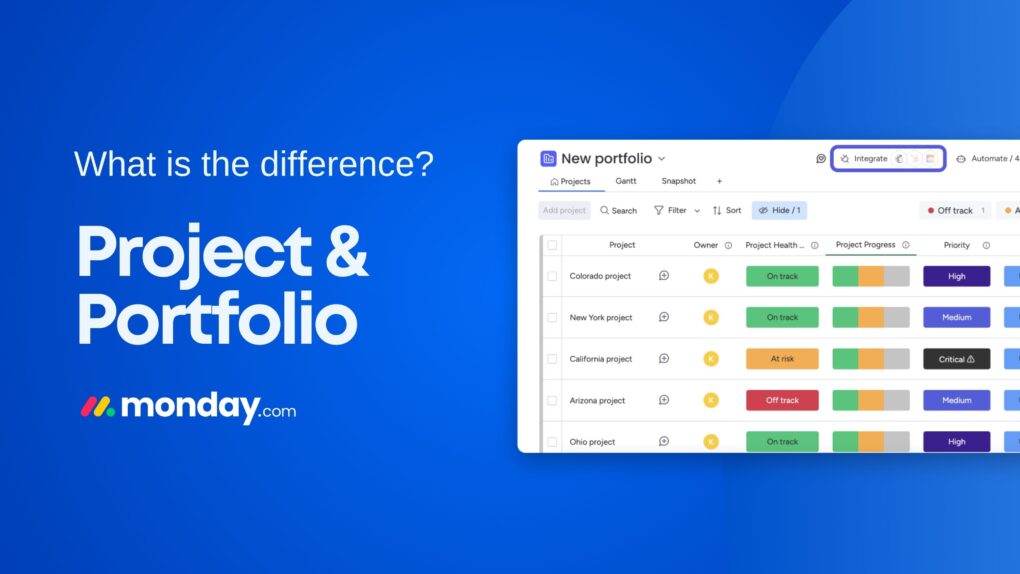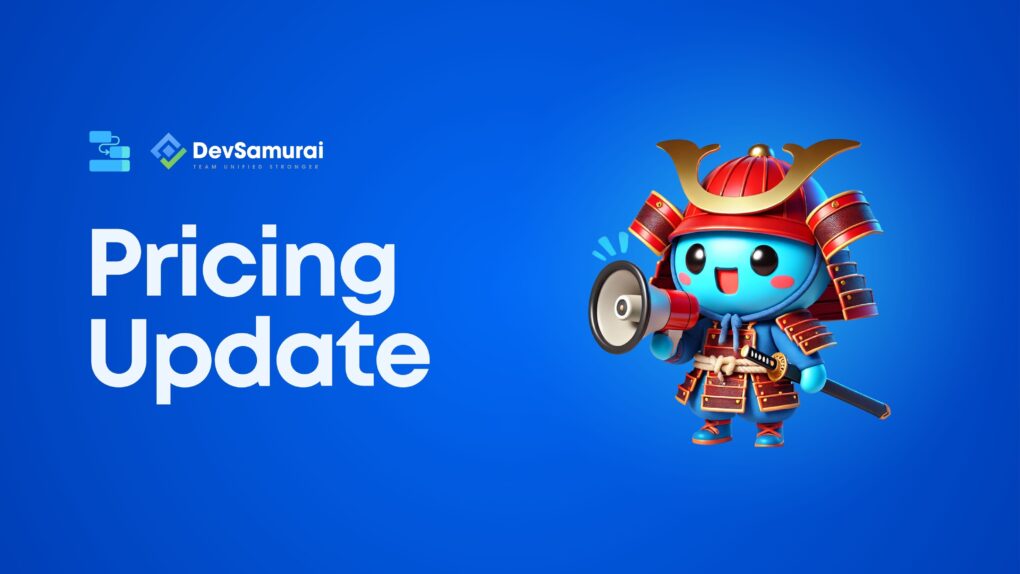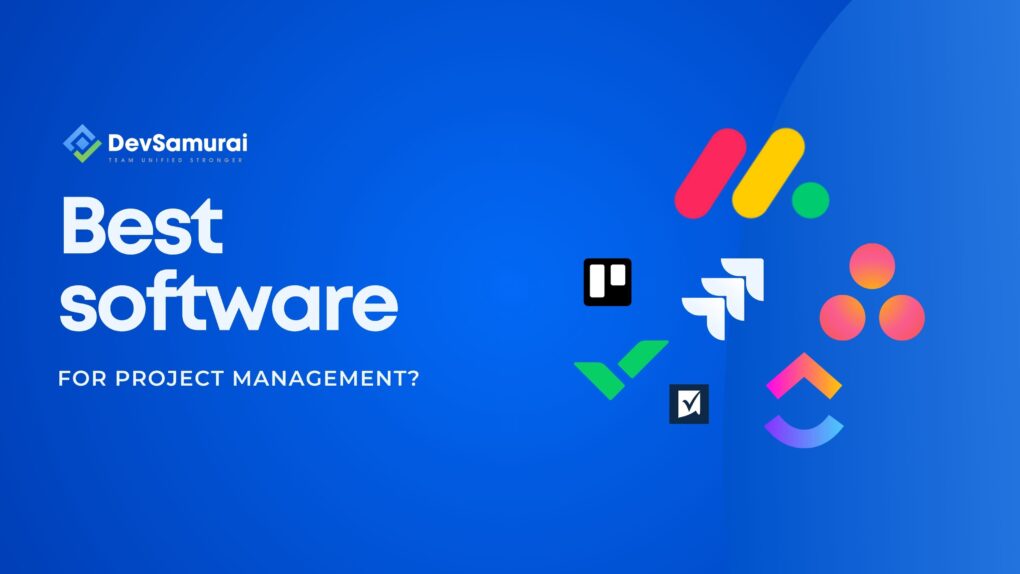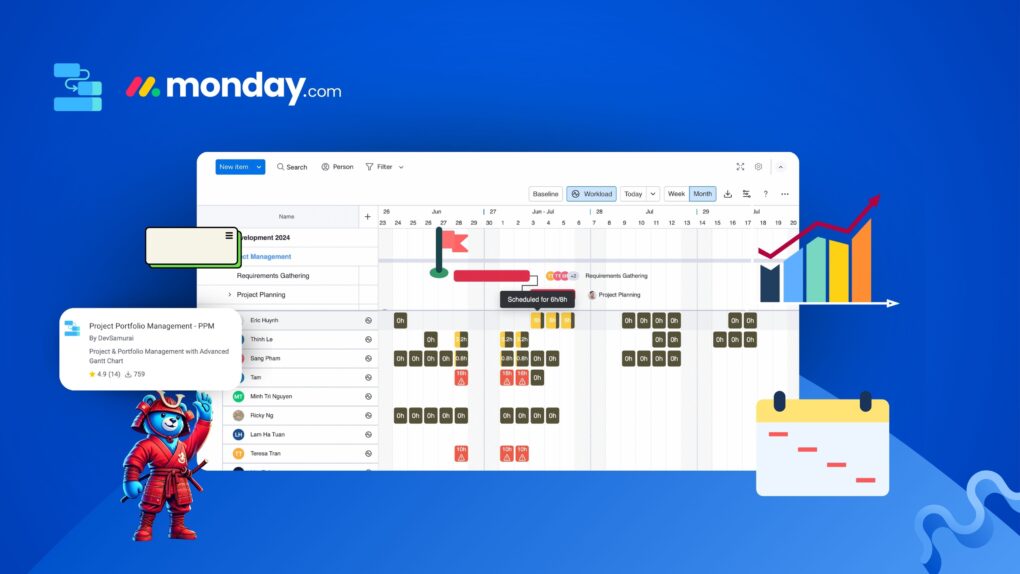Handling multiple projects at once is no small task. With tight deadlines, shifting priorities, and team coordination, it’s easy to lose track of progress. The solution? A smart system that keeps everything organized and running smoothly.
Monday.com offers a wide range of Project Portfolio Management (PPM) templates specifically designed to simplify project management. Not only are these templates flexible and easy to use, but they are also perfect for managing complex workflows. Furthermore, in the sections below, we’ll explore 10 templates that can help you stay in control and consistently deliver exceptional results.
Why Use Monday.com for Complex Projects?
Managing complex projects is about more than just tracking tasks—it’s about staying organized, keeping teams aligned, and meeting deadlines. monday.com ppm template simplifies this with features like:
- Customizable Templates: Adapt templates to fit your team’s needs.
- All-in-One Tracking: Manage tasks, deadlines, and updates in one place.
- Real-Time Collaboration: Keep everyone aligned with live updates and shared boards.
- Automation: Save time by automating repetitive tasks.
- Integrations: Connect with tools like Slack, Jira, and Google Drive.
These tools make it easier to manage even the most complex projects. Let’s explore the templates that help make it happen.
10 PPM Templates on Monday.com for Managing Complex Projects
Here’s a closer look at 10 powerful Project Portfolio Management (PPM) templates on Monday.com that can help you organize, track, and complete even your most challenging projects. Furthermore, these templates are designed to simplify workflows and enhance productivity, making complex project management more manageable:
1. Project Portfolio Management Template
The Project Portfolio Management (PPM) Template is a powerful tool for overseeing multiple projects at once. Moreover, it provides a bird’s-eye view of all ongoing initiatives, allowing you to track their status, progress, and overall health in a single, organized layout. Additionally, this template is perfect for managers who are juggling several projects or teams and need a centralized way to monitor everything efficiently.
Column Structure for Project Portfolio Management Template
| Column Name | Type | Monday.com Feature to Use |
| Project Name | Text | Free-text input for project titles. |
| Status | Status | Use a customizable dropdown (e.g., On Track, At Risk, Delayed, Completed). |
| Priority | Dropdown or Status | Create tags like High, Medium, Low for prioritizing projects. |
| Owner | People | Assign specific team members as project leads. |
| Team/Department | Dropdown | Categorize by department (e.g., Marketing, IT, Sales). |
| Start Date | Date | Set project start dates for tracking schedules. |
| End Date/Deadline | Date | Define project deadlines to ensure timely completion. |
| Progress % | Numbers | Use percentage tracking or connect with progress bars. |
| Budget Allocated | Numbers | Set a budget field with currency formatting (e.g., $). |
| Budget Spent | Numbers | Add actual spend to compare with the allocated budget. |
| Budget Variance | Formula | Calculate variance using a formula (Budget Allocated – Spent). |
| Risk Level | Dropdown or Status | Track risks as Low, Medium, or High for project health. |
| Category | Tags | Group projects by themes (e.g., Internal, External, Innovation). |
| Last Update | Last Updated | Automatically tracks when a status or field is last changed. |
| Dependencies | Link to Item | Connect tasks or projects dependent on each other. |
| Notes/Comments | Long Text | Add detailed project descriptions or updates. |
Key Monday.com Features to Leverage
- Dashboards: Use a dashboard to visualize key metrics like progress, budget, and deadlines across projects.
- Automations: Create automations for status updates, such as ‘If progress is 100%, mark status as Completed.’ Additionally, notify owners when deadlines are approaching or when any changes occur. Furthermore, these automations help streamline communication and ensure tasks stay on track
- Integrations: Sync with tools like Slack, Jira, or Google Drive to centralize communication and files.
- Progress Tracking: Use visual progress bars connected to the “Progress %” column for easy tracking.
- Filters: Filter by department, risk level, or project status to focus on what matters most.
2. Resource Management Template
The Resource Management Template is specifically designed to help you allocate and monitor resources effectively across multiple projects. Moreover, it ensures that team members are not overburdened and that resources such as time, budget, and tools are utilized efficiently. Additionally, this template provides a clear overview of who is working on what, how much time or effort is being spent, and where adjustments may be needed to optimize performance.
Column Structure for Resource Management Template
| Column Name | Column Type | Monday.com Feature to Use |
| Resource Name | People | Assign team members or resources (e.g., equipment, tools). |
| Assigned Project | Link to Item | Connect resources to specific projects. |
| Role/Responsibility | Text | Describe the resource’s role (e.g., Developer, Designer). |
| Start Date | Date | Track when the resource begins work on a project. |
| End Date | Date | Set deadlines or project end dates for the resource. |
| Workload % | Numbers | Monitor the percentage of the resource’s workload. |
| Availability | Dropdown | Use options like Available, Partially Available, Unavailable. |
| Task Count | Formula | Automatically count the number of tasks assigned per resource. |
| Skill Set | Tags | Add skills or qualifications for easier matching. |
| Conflicts/Overlaps | Status | Highlight resource allocation issues (e.g., No Conflicts, Overloaded). |
| Notes | Long Text | Record additional details about the resource or allocation. |
Key Monday.com Features to Leverage
- Workload Widget: Use the workload widget on dashboards to visualize how team members are allocated across tasks or projects.
- Automations: Set up alerts for when a resource’s workload exceeds a certain percentage (e.g., “If Workload % > 100%, notify the project manager”).
- Filters: Filter by availability, skill set, or role to find suitable resources for specific tasks or projects.
- Integrations: Sync with scheduling tools (like Google Calendar) to track availability and time-off requests.
- Dashboards: Create a centralized view of all resource allocations, workloads, and conflicts to not only identify gaps but also uncover opportunities for optimization. Additionally, this approach helps ensure that resources are used effectively and efficiently across projects.
- Dependencies: Use linked items to identify dependencies between resources and projects, ensuring smooth handoffs.
3. Risk Management Template
The Risk Management Template is highly effective in helping teams proactively identify, assess, and mitigate potential risks in projects. Furthermore, it provides a structured approach to tracking risks, analyzing their impact, and implementing mitigation plans. As a result, it ensures that your projects stay on track, even in the face of challenges.
Column Structure
| Column Name | Type | Monday.com Feature to Use |
| Risk Name | Text | Name or brief description of the identified risk. |
| Project Name | Link to Item | Connect the risk to its associated project. |
| Risk Owner | People | Assign responsibility for managing the risk. |
| Severity | Dropdown | Categorize the impact as Low, Medium, or High. |
| Likelihood | Dropdown | Rate the probability of occurrence (e.g., Unlikely, Possible, Likely). |
| Impact Level | Formula or Numbers | Combine severity and likelihood scores to prioritize risks. |
| Mitigation Plan | Long Text | Outline actions to reduce or eliminate the risk. |
| Deadline for Action | Date | Set a target date for implementing the mitigation plan. |
| Current Status | Status | Track progress (e.g., Identified, In Progress, Resolved). |
| Notes/Comments | Long Text | Add additional details or context about the risk. |
Key Monday.com Features to Leverage
- Automations: Create automations to alert risk owners when deadlines are approaching.Notify stakeholders when a new high-risk item is added.
- Dashboards: Build a risk dashboard to effectively visualize risks by category, severity, or likelihood. Furthermore, use graphs to clearly display the number of high-risk items and track their resolution progress. Additionally, this helps teams prioritize and address the most critical issues efficiently.
- Formulas: Use formulas to calculate a risk score by multiplying severity and likelihood (e.g., High = 3, Medium = 2, Low = 1).
- Integrations: Sync with reporting tools (e.g., Excel or Google Sheets) for detailed risk analysis. Connect with communication tools (e.g., Slack or email) for risk updates.
- Filters: Filter by project, severity, or likelihood to focus on the most critical risks.
4. Budget Tracker Template
The Budget Tracker Template is particularly useful for monitoring project finances by tracking allocated budgets, actual expenditures, and variances. Moreover, it is ideal for ensuring that projects stay within financial limits. Additionally, it helps identify areas where cost adjustments may be necessary, promoting better financial management overall.
Column Structure
| Column Name | Type | Monday.com Feature to Use |
| Project Name | Text | Enter the project title. |
| Budget Allocated | Numbers | Set the approved budget for each project. |
| Actual Spent | Numbers | Track the amount spent in real-time. |
| Variance | Formula | Automatically calculate (Budget Allocated – Actual Spent). |
| Expense Category | Dropdown | Categorize expenses (e.g., Labor, Materials, Software). |
| Approval Status | Status | Indicate if expenses are Approved, Pending, or Rejected. |
| Owner | People | Assign a financial manager or team lead. |
| Deadline | Date | Set financial reporting or approval deadlines. |
| Notes/Comments | Long Text | Add details about expenses or budget changes. |
Key Features
- Formulas: Automate variance calculations for instant insights.
- Dashboards: Visualize budget usage with pie charts or bar graphs.
- Automations: Notify stakeholders if spending exceeds a set threshold
5. Goal Alignment Template
The Goal Alignment Template is highly effective in ensuring that projects contribute to strategic organizational goals. Furthermore, it helps teams track progress toward objectives while prioritizing initiatives that matter the most. As a result, it keeps everyone focused on achieving meaningful outcomes.
Column Structure
| Column Name | Type | Monday.com Feature to Use |
| Project Name | Text | Title of the project. |
| Goal/Objective | Text | Link the project to a strategic goal or objective. |
| OKR (Key Result) | Numbers | Set measurable results for each goal. |
| Progress % | Numbers | Track completion percentage of each goal. |
| Owner | People | Assign responsibility for the goal. |
| Priority | Status | Label goals as High, Medium, or Low priority. |
| Deadline | Date | Set a target date for achieving the goal. |
| Impact Level | Dropdown | Rate the goal’s significance (e.g., High, Medium, Low). |
| Notes/Comments | Long Text | Add details about the goal or progress. |
Key Features
- Progress Bars: Visually track progress toward goals.
- Automations: Send reminders for overdue goals.
- Dashboards: Monitor progress across multiple goals.
6. Task Dependencies Template
The Task Dependencies Template is essential for managing complex workflows, especially when tasks depend on the completion of others. Moreover, it ensures that tasks are completed in the correct order, which helps maintain smooth project progression. Additionally, it reduces delays by providing a clear structure for task prioritization
Column Structure
| Column Name | Type | Monday.com Feature to Use |
| Task Name | Text | Name the task. |
| Project Name | Link to Item | Connect the task to its associated project. |
| Owner | People | Assign team members to tasks. |
| Start Date | Date | Record when the task begins. |
| End Date | Date | Track when the task is due. |
| Predecessors | Link to Item | Link tasks that must be completed first. |
| Status | Status | Track task progress (e.g., Not Started, In Progress, Completed). |
| Priority | Dropdown | Set priority levels (e.g., High, Medium, Low). |
| Notes/Comments | Long Text | Add task-specific details or instructions. |
Key Features
- Dependency Automation: Automatically adjust schedules when predecessors change.
- Gantt Charts: Visualize task dependencies and timelines.
- Filters: Focus on high-priority or critical-path tasks.
7. Change Management Template
The Change Management Template is highly effective for helping teams handle change requests efficiently. In addition, it tracks approvals, assesses impacts, and monitors implementation timelines, thereby ensuring smooth and seamless transitions.
Column Structure
| Column Name | Type | Monday.com Feature to Use |
| Change Request Name | Text | Enter the name or description of the change request. |
| Project Name | Link to Item | Connect the change to its related project. |
| Owner | People | Assign responsibility for handling the change. |
| Reason for Change | Long Text | Document the rationale behind the change. |
| Impact Level | Dropdown | Rate the impact as Low, Medium, or High. |
| Approval Status | Status | Track approvals (e.g., Pending, Approved, Rejected). |
| Implementation Deadline | Date | Set a target date for completing the change. |
| Current Status | Status | Track progress (e.g., Under Review, Implementing, Completed). |
| Notes/Comments | Long Text | Add further details about the change. |
Key Features
- Automations: Notify stakeholders when a change is approved or rejected.
- Dashboards: Visualize the number and status of ongoing change requests.
- Integrations: Connect with Slack or email for faster communication.
8. Gantt Chart Template
The Gantt Chart Template is particularly ideal for visualizing project timelines. Moreover, it enables teams to plan, schedule, and track progress while providing clear task dependencies and milestones. As a result, teams can stay organized and ensure timely project completion
Column Structure
| Column Name | Type | Monday.com Feature to Use |
| Task Name | Text | Name of the task. |
| Project Name | Link to Item | Link tasks to the related project. |
| Owner | People | Assign team members to tasks. |
| Start Date | Date | Set the start date. |
| End Date | Date | Add task deadlines. |
| Status | Status | Track task progress (e.g., Not Started, In Progress, Completed). |
| Dependencies | Link to Item | Link tasks to their predecessors. |
| Priority | Dropdown | Set priority levels (e.g., High, Medium, Low). |
Key Features
- Gantt View: Drag-and-drop tasks on a timeline.
- Dependency Tracking: Adjust task dates automatically when predecessors change.
- Dashboards: Summarize timelines for stakeholders.
9. Stakeholder Communication Template
This template effectively organizes communication schedules, updates, and meeting notes to ensure that stakeholders remain informed and engaged throughout the entire project lifecycle. Additionally, it provides a structured approach to maintaining transparency and fostering collaboration.
Column Structure
| Column Name | Type | Monday.com Feature to Use |
| Stakeholder Name | People | List key stakeholders. |
| Project Name | Link to Item | Connect updates to specific projects. |
| Update Frequency | Dropdown | Set update intervals (e.g., Weekly, Monthly). |
| Last Update Sent | Date | Track the date of the most recent update. |
| Next Update Due | Date | Schedule upcoming updates. |
| Meeting Notes | Long Text | Record details from meetings or calls. |
| Status | Status | Track engagement level (e.g., Informed, Requires Attention). |
Key Features
- Automations: Set reminders for sending updates.
- Integrations: Sync with email tools for automatic communication.
- Filters: Focus on high-priority stakeholders.
10. Project Health Dashboard Template
The Project Health Dashboard Template provides a comprehensive overview of project performance. Moreover, it displays key metrics such as budget, risks, and progress, allowing teams to assess project status at a glance. Additionally, it helps managers make informed decisions quickly and efficiently.
Column Structure
| Column Name | Type | Monday.com Feature to Use |
| Project Name | Text | List all active projects. |
| Status | Status | Monitor overall health (e.g., On Track, At Risk, Delayed). |
| Progress % | Numbers | Show completion rates with visual bars. |
| Budget Variance | Formula | Track budget performance. |
| Risk Level | Dropdown | Indicate project risks as Low, Medium, or High. |
| Owner | People | Assign project leads. |
Key Features
- Dashboards: Combine data from all projects into a single view.
- Automations: Notify managers when risks or delays arise.
- Visuals: Use pie charts, bar graphs, and progress bars for quick insights.’
How to Use and Customize These Templates
Choose the Right Template
- Browse through Monday.com’s template library and select the one that best fits your project or portfolio needs (e.g., Budget Tracker for financial tracking or Risk Management for identifying potential issues).
- If managing multiple aspects, consider combining templates, such as linking Resource Management with the Project Portfolio template.
Customize the Columns
- Edit Existing Columns: Adjust names and options in dropdowns, statuses, and text fields to match your processes (e.g., change “Priority” levels to High/Medium/Low or Urgent/Optional).
- Add New Columns: Include additional fields like KPIs, performance ratings, or specific milestones based on your workflow.
- Formula Columns: Use Monday.com’s formula feature to create automatic calculations, such as tracking budget variance or resource utilization rates.
Add Automation
Set up automations to save time and improve efficiency:
- Example: Automatically change task status to “Completed” when the progress column hits 100%.
- Notify stakeholders when risks are flagged as “High.”
- Send reminders when deadlines are approaching or exceeded.
Use Views and Dashboards
- Views: To begin with, customize how you see the data by using Gantt charts, calendars, or Kanban boards. Furthermore, switch between views to cater to different project needs.
- Dashboards: Similarly, create a visual overview of key metrics such as project progress, budget usage, or workload distribution across teams. In addition, dashboards are ideal for reporting to stakeholders or executives, providing a clear and comprehensive summary.
Integrate with Other Tools
To streamline workflows, connect with your favorite tools. For instance, use Slack or email integrations to enhance communication. Additionally, sync with tools like Google Drive, Jira, or Excel for efficient file management and task tracking. Moreover, financial tools like QuickBooks can be integrated to simplify budget tracking.
Train Your Team
First, ensure everyone understands how to use the template effectively by hosting a short training session or sharing Monday.com’s tutorials. Furthermore, assign specific roles and responsibilities for updating statuses, tasks, and other details to maintain clarity and accountability.
Update and Review Regularly
To begin with, set a regular schedule for updating data to ensure accuracy and consistency. Additionally, periodically review the template’s structure to confirm that it continues to meet your needs as your project or portfolio evolves.
Related Blogs:
- Why DevSamurai PPM Outshines BigPicture PPM and monday.com’s Gantt Tools
- What is the difference between project and portfolio in monday.com?
- What is the best software for project management?
Pro Tip: Save Your Customizations
Once you’ve customized a template, save it as a new template for future use. This allows your team to maintain consistency across projects while adapting to specific requirements.
By customizing and effectively leveraging these templates, you’ll not only create a powerful system but also significantly simplify the process of managing even the most complex projects.
Managing complex projects, however, becomes significantly easier with Monday.com’s PPM templates. These tools not only help streamline workflows but also track progress and ensure your team stays aligned. Moreover, with features like automations and dashboards, you can effortlessly customize each template to fit your needs, allowing you to focus on delivering exceptional results.
Start simplifying your projects today with Monday.com’s powerful templates!


